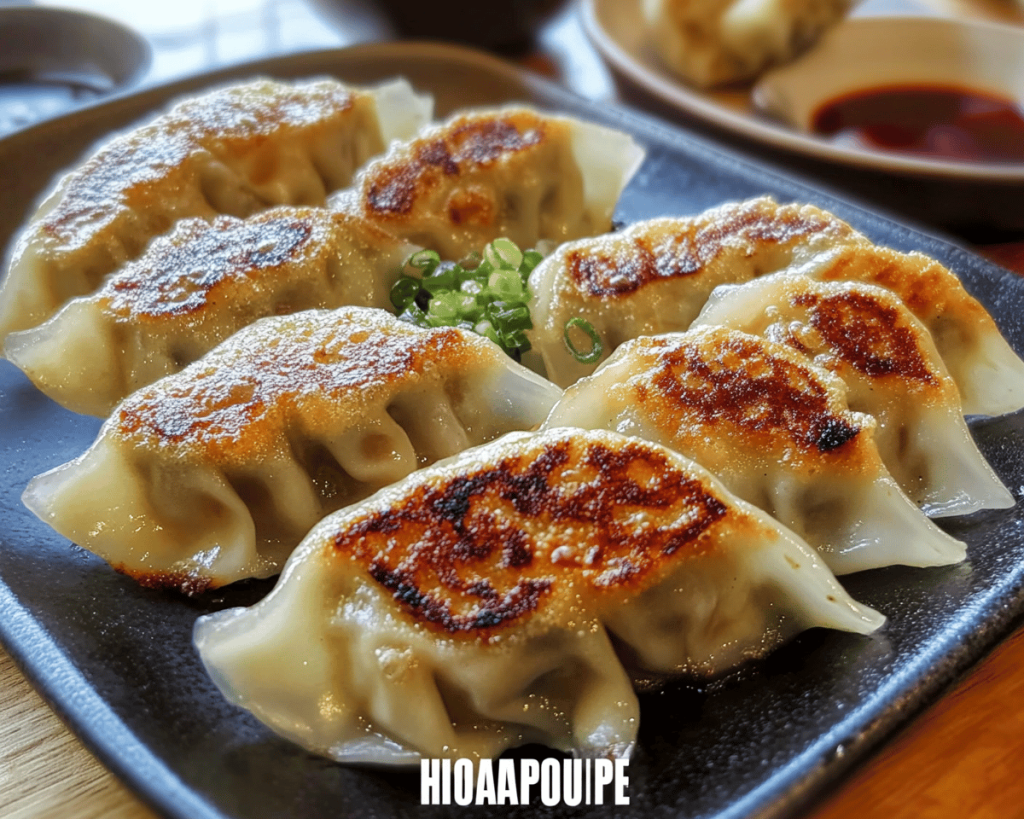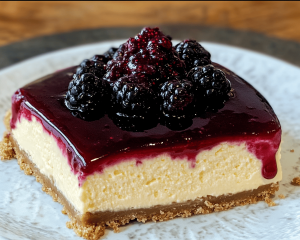Honestly, there’s something just so magical about gyoza. The moment you take a bite, you’re greeted with that tantalizing burst of flavor, and it always brings me back to the bustling streets of Japan. I remember the first time I had a fresh gyoza, a little stall tucked away in a corner, steam rising as they sizzled in the pan. It was such a cozy spot, and I found myself going back every day during my little adventure there. The satisfaction of dipping those crispy edges into a soy-vinegar sauce was unforgettable, and now, I’m all about recreating that magic right in my own kitchen.
You see, gyoza isn’t just food; it’s a beautiful experience that wraps together all the things I love about home cooking: the nurturing, the creativity, and a hint of nostalgia. When I whip up a batch of these dumplings, it’s like a little dance of flavors and memories. You know what I mean? The rhythmic folding of the gyoza skins, the fragrant filling; not only are they delicious, but I promise it’s therapeutic too. Plus, it’s the ultimate party trick—watching guests ooh and aah as they indulge in something that’s as pretty as it is tasty. And if I’m being honest, they’re best enjoyed with friends gathered around the table, eager to dig in.
So, let’s roll up our sleeves and jump into my perfect homemade gyoza recipe. Trust me, this isn’t just a culinary task; it’s a chance to create a memorable experience that you’ll cherish.
What Goes Into Perfect Homemade Gyoza?
Before we dive into the nitty-gritty of the recipe, let me break down each ingredient we’ll be using. Each one has its own little story and secret that makes the gyoza just sing.
Gyoza wrappers: You can find these at most Asian grocery stores (or even in the freezer section at your regular market), but if you wanna be a superstar, you can make your own too. Just a simple dough of flour and water! I’ve tried this a few times, and while the end result can be satisfying, I ultimately go for the store-bought ones for the convenience.
Pork: I prefer ground pork because it has that fat content that keeps the filling juicy and flavorful. Honestly, don’t overthink this part. If you want a lighter option, ground chicken or mushroom make for tasty substitutes. It’s what you prefer!
Green onions: This is where things get wonderfully aromatic. Freshly chopped green onions give the filling a vibrant kick. If I run out of fresh ones, I’ve used frozen ones in a pinch, and they work just fine.
Garlic and ginger: These two are a match made in heaven—adding depth and wonderful warmth to the filling. My friend once joked that garlic is like the friend who never leaves your party, and honestly, who would want it to? Freshly minced is the way to go for that zing, but powdered also suffices if you’re in a rush.
Chinese cabbage or napa cabbage: This adds moisture and crunch! It’s like a little layer of love in your dumpling. You can substitute with other leafy greens, but cabbage holds onto that wateriness a little better without going mushy.
Soy sauce: You can’t have gyoza without this! It shades the meat filling with umami. I’ve been known to have a special stash of soy sauce that I swear by—like it’s elixir or something.
Sesame oil: Just a splash is enough to convince even the most skeptical palates. The nuttiness that sesame brings is irreplaceable. Once, I even tried using chili oil instead for a spicy surprise—delicious!
Salt and pepper: A simple seasoning combo that elevates everything else, but do feel free to adjust to your taste. Sometimes I get a bit too generous with the salt, which adds an element of surprise when my husband and I do a salt tasting. Fun times, I tell ya!
These are the key players, but let’s not forget you can play around with other ingredients if the spirit moves you. The beauty of gyoza is its versatility!
Is Gyoza Actually Good for You?
Here’s the thing: gyoza can be a delicious treat, but let’s not fool ourselves into thinking they’re health food. They’re not exactly kale smoothies, but a little indulgence never hurt anyone!
The foundational ingredients like cabbage and the lean pork (or other protein you decide to use) can pack a protein punch, and you do get a bit of fiber from the veggies too. When I make them at home, I generally lean towards using less oil for cooking than you’d find in your average restaurant showcase.
Now, let’s be real—homemade gyoza do involve some *crispy frying,* and they might be a bit on the carb-heavy side, but they should be savored! They’re all about balance and enjoyment. Honestly, it’s those delightful moments of sharing food with loved ones that I consider the most nourishing part of bringing gyoza to the table.
Here’s What You’ll Need
– Servings: About 30 gyoza
– 1 package of gyoza wrappers
– 1 pound of ground pork
– 2 cups of finely chopped Chinese cabbage
– 4 green onions, finely chopped
– 2 cloves of garlic, minced
– 1 teaspoon of freshly grated ginger
– 2 tablespoons of soy sauce
– 1 teaspoon of sesame oil
– Salt and pepper to taste
– Cooking oil (for pan-frying)
– Water (for sealing and steaming)
How to Make Perfect Homemade Gyoza Step-by-Step
Are you ready? Grab your ingredients and let’s get started! I recommend putting on your favorite music because, hey, cooking is an art, right?
1. **Mix the Filling**: In a large mixing bowl, combine your ground pork, finely chopped cabbage, green onions, garlic, and ginger. I usually just dive right in with my hands (you can feel the texture)! Add in the soy sauce and sesame oil, then season with salt and pepper. Give it a good mix until everything is combined. Don’t overdo it—just mix until it’s all hugging. Set aside, and let those flavors mingle while you prep the wrappers.
2. **Prep the Wrappers**: Lay out your gyoza wrappers on a clean surface. Keep a small bowl of water nearby because you’re going to use it for sealing.
3. **Fill ‘Em Up**: Take a wrapper and place about a tablespoon of your filling in the center. You don’t want to overstuff; gyoza is delicate, and there’s a fine line between plump and exploded! Dip your finger in the water and moisten the edges of the wrapper. Fold it in half, pinching the edges to seal. I like to get a little fancy and create pleats along the sealed edge, but that’s just me trying to impress.
4. **Heat the Pan**: In a non-stick skillet, add a splash of oil and heat it over medium-high heat. I like experimenting with oils; sometimes I toss in sesame oil for added flavor!
5. **Fry Time**: Once the pan is hot, gently place your gyoza in a single layer. Let them fry for about 2-3 minutes until the bottoms are golden brown. The sizzle is music to my ears.
6. **Steam ‘Em Up**: Carefully pour in about half a cup of water—steaming action about to happen! Cover the skillet immediately and let those beauties steam for 5-6 minutes. You know they’re done when the water has evaporated, and the gyoza are glistening and tender.
7. **Serve and Share**: Carefully transfer the gyoza to a plate. Serve them hot with a combination of soy sauce and rice vinegar for dipping. You might even like to sprinkle a bit of chili oil on top if you’re feeling adventurous.
There you have it! Perfect homemade gyoza, just waiting for you and your friends to dive in.
Little Extras I’ve Learned Along the Way
Over the years, I’ve picked up a few tips and tricks that might help your gyoza journey:
– **Make Ahead**: You can prepare the filling a day or two ahead and keep it in the fridge—just wait to assemble the wrappers right before cooking. Or you can freeze the assembled gyoza! Just layer them in a container with parchment paper in between, and freeze them. When you’re ready, pop them into the pan straight from the freezer—no need to thaw.
– **Get Creative**: I once made a batch using shrimp instead of pork—I just chopped them finely and seasoned them the same way. They were a hit at my dinner party! Feel free to mix flavors to match what you desire.
– **The Sauce**: In addition to the classic soy-vinegar sauce, you can get creative with sauces. I love a spicy peanut sauce too, especially when you want that extra kick.
– **Gather Friends**: If you can, have a gyoza making night! It’s a great way to bond, and you can make a larger batch together (perhaps with some wine?). I know of people who set up a gyoza station and let everyone get creative with fillings.
– **Practice with the Pleats**: Don’t worry if your pleats aren’t perfect! Each gyoza will have its own personality; it’s part of the charm. The more you fold, the better you’ll get—who doesn’t enjoy a little hands-on practice?
Cooking this recipe is about more than just the end result; it’s about enjoyment, connection, and a bit of chaos in the kitchen. It’s an invitation to explore and create something unique.
So, give this perfect homemade gyoza recipe a whirl! This one means a lot to me, and I’d love to hear your twists and turns in the comments. Let me know if you try it! You’ll have an amazing experience in every bite.



